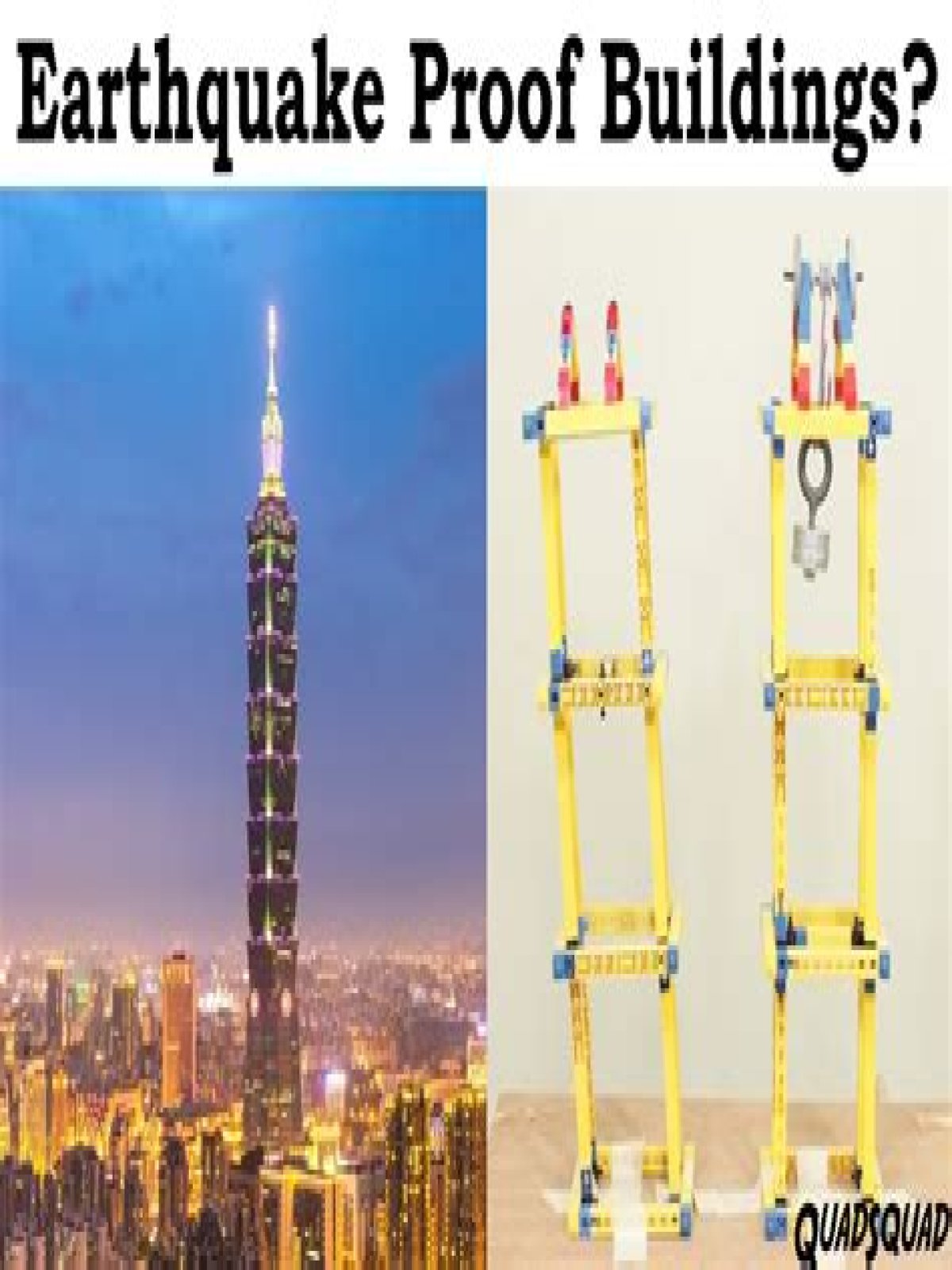- What is the best building to survive an earthquake?
- Where is the safest place to be in a building during an earthquake Why?
- What are three things you should not do during an earthquake?
- How can earthquake affect buildings?
- What makes a building vulnerable to an earthquake?
- Where is the safest place to be during an earthquake?
- What happens to the foundations of a building in an earthquake?
- How are high rises designed to withstand earthquakes?
What is the best building to survive an earthquake?
Wood and steel have more give than stucco, unreinforced concrete, or masonry, and they are favored materials for building in fault zones. Skyscrapers everywhere must be reinforced to withstand strong forces from high winds, but in quake zones, there are additional considerations.
Where is the safest place to be in a building during an earthquake Why?
If available, the safest place is under a strong table or desk. If no sturdy object is available, get next to an interior wall with no windows. Finally, HOLD ON to your shelter if you have one, as the temblor will likely involve great shaking.
Why is it so important for the buildings to be constructed properly in areas where earthquakes happen?
Strong construction joints are critical in building a structure that will withstand the shear loading of an earthquake. Earthquake-resistant construction requires that the building be properly grounded and connected through its foundation to the earth.
How can we reduce the impact of earthquakes on buildings?
Two basic technologies are used to protect buildings from damaging earthquake effects. These are Base Isolation Devices and Seismic Dampers.
What are three things you should not do during an earthquake?
What should I NOT do during an earthquake?
- DO NOT turn on the gas again if you turned it off; let the gas company do it.
- DO NOT use matches, lighters, camp stoves or barbecues, electrical equipment, appliances UNTIL you are sure there are no gas leaks.
- DO NOT use your telephone, EXCEPT for a medical or fire emergency.
How can earthquake affect buildings?
The shaking from an earthquake can turn loose soil into a liquid during an earthquake. Liquefaction can undermine the foundations and supports of buildings, bridges, pipelines, and roads, causing them to sink into the ground, collapse or dissolve.
How can we prevent earthquake damage?
How to Prevent Earthquake Damage
- Secure your belongings.
- Put latches on cabinet doors and file cabinets.
- Fasten your water heater and other appliances.
- Store hazardous materials in a sturdy place.
- Keep fire extinguishers.
How to build a building that is earthquake proof?
How to Make A Building Earthquake-Proof 1 Create a Flexible Foundation. One way to resist ground forces is to “lift” the building’s foundation above the earth. 2 Counter Forces with Damping. You might be aware that cars have shock absorbers. 3 Shield Buildings from Vibrations. 4 Reinforce the Building’s Structure. …
What makes a building vulnerable to an earthquake?
Ductility refers to the ability of the material to undergo large plastic deformations. Brick and concrete buildings have low ductility and therefore absorb very little energy. This makes them especially vulnerable in even minor earthquakes. Buildings constructed of steel-reinforced concrete,…
Where is the safest place to be during an earthquake?
The best places would be in doorframes or under sturdy tables. If you are in a skyscraper, I think the recomended areas are the ones closest to the center of he building, the floor you are on won’t matter as much as where you are on the floor. The center is where the most structural support is.
What makes a foundation strong in an earthquake?
The lead core makes the bearing stiff and strong in the vertical direction, while the rubber and steel bands make the bearing flexible in the horizontal direction. Bearings attach to the building and foundation via steel plates and then, when an earthquake hits, allow the foundation to move without…
Are there any buildings that can withstand an earthquake?
While no structure can be entirely immune to damage from earthquakes, the goal of earthquake-resistant construction is to erect structures that fare better during seismic activity than their conventional counterparts. According to building codes, earthquake-resistant structures are intended to withstand…
What happens to the foundations of a building in an earthquake?
If a building’s foundation sits on soft or filled-in soil, the whole building may fail in an earthquake regardless of the advanced engineering techniques employed. Assuming, however, that the soil beneath a structure is firm and solid, engineers can greatly improve how the building-foundation system will respond to seismic waves.
How are high rises designed to withstand earthquakes?
American high-rises are typically built with a concrete core that resists most of the seismic forces of an earthquake. Japanese high-rise construction commonly uses a grid of steel beams and columns that evenly distributes seismic forces across the structure and diagonal dampers that serve as shock absorbers.
Which is more vulnerable to an earthquake a 3 story building or a 30 story building?
It requires less effort to remain standing if you flex your body and flow with the bumps and jolts than if you stiffly try to defy them. Because shorter buildings are stiffer than taller ones, a three-story apartment house is considered more vulnerable to earthquake damage than a 30-story skyscraper.
